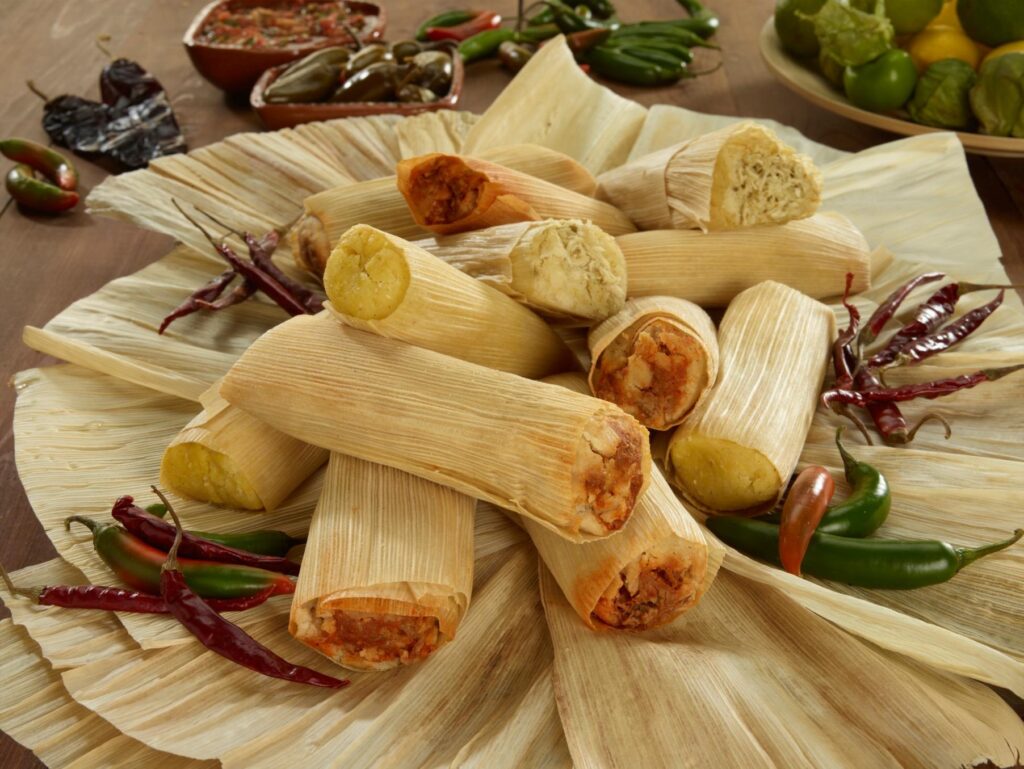
What are tamales?
Well the question is deeper than most would think. Tamales are about tradition. They bring the entire family together. It is part art, part hard work, part repetitive labor but all family bonding. This is a very special time that brings generations together, an event families look forward to each year, making it a joyous and meaningful gathering.
Keep in mind, this is no easy task. For many hard-working families it is a labor of love that started many, many years ago. If you make tamales from scratch, it requires preparing the masa (corn dough), cooking or preparing the filling, soaking the corn husks, and putting it all together! These tiny packages can be savory and filled with meat, cheese, or vegetables or, they can even be sweet and filled with fruit! The real work is putting the tamale together. First the corn husk, which was steamed to make it pliable, is filled with masa. Next, the filling is placed on top of the masa and then quickly rolled and tucked in from the bottom to form a perfect edible present! Each tamale is unique and created one by one.
From the San Gabriele Valley Tribune, “Historians speculate the creation of tamales dates to 8,000 to 5,000 B.C., according to M. Dustin Knepps, an assistant professor of Spanish at the University of Central Arkansas who specializes in Latino and Latin American Cultural Studies. Tamales were served at great Aztec banquets and in the streets and homes of the Americas long before the arrival of the Europeans. The tamal has evolved over the years and versions still vary from town to town in Mexico and South America, where some use banana leaves instead of corn husks. But the basic [concept] is the same — a corn masa is spread on a leaf wrapper, filled with meat or another dish, wrapped up tight and steamed or boiled.” (1)
Despite how they are made or what they are filled with, tamales symbolize more than just a meal to Latino families. Although tamales can be made year-round, they became a dish saved for special occasions such as Christmas or large family gatherings when a ‘tamalada’ is held. That’s because of all the time and work it takes to make them. In a tamalada, each family member takes on a different task to prepare the tamales and the older generations share their skills and tradition with the younger generation. Several books and stories have been written of the tradition of making tamales and the joint effort it takes from families to make them. (1)
So for this Christmas, let Basha’s help to bring a family tradition to your home without all the work our new and busy lives require. You can find prepared tamales in our Deli or the ingredients to make your own tamales. Be inspired by the traditional recipes, but don’t be afraid to try something new! We wish you a Merry Christmas and the excitement of creating a new tradition in your home.
This article was a contribution from Mama Lola’s Authentic Tortillas. For a traditional tamale recipe please check out this post or visit Mama Lola’s website.
(1) https://www.sgvtribune.com/2013/12/24/tamales-symbolize-more-than-just-a-meal-to-latino-families/
